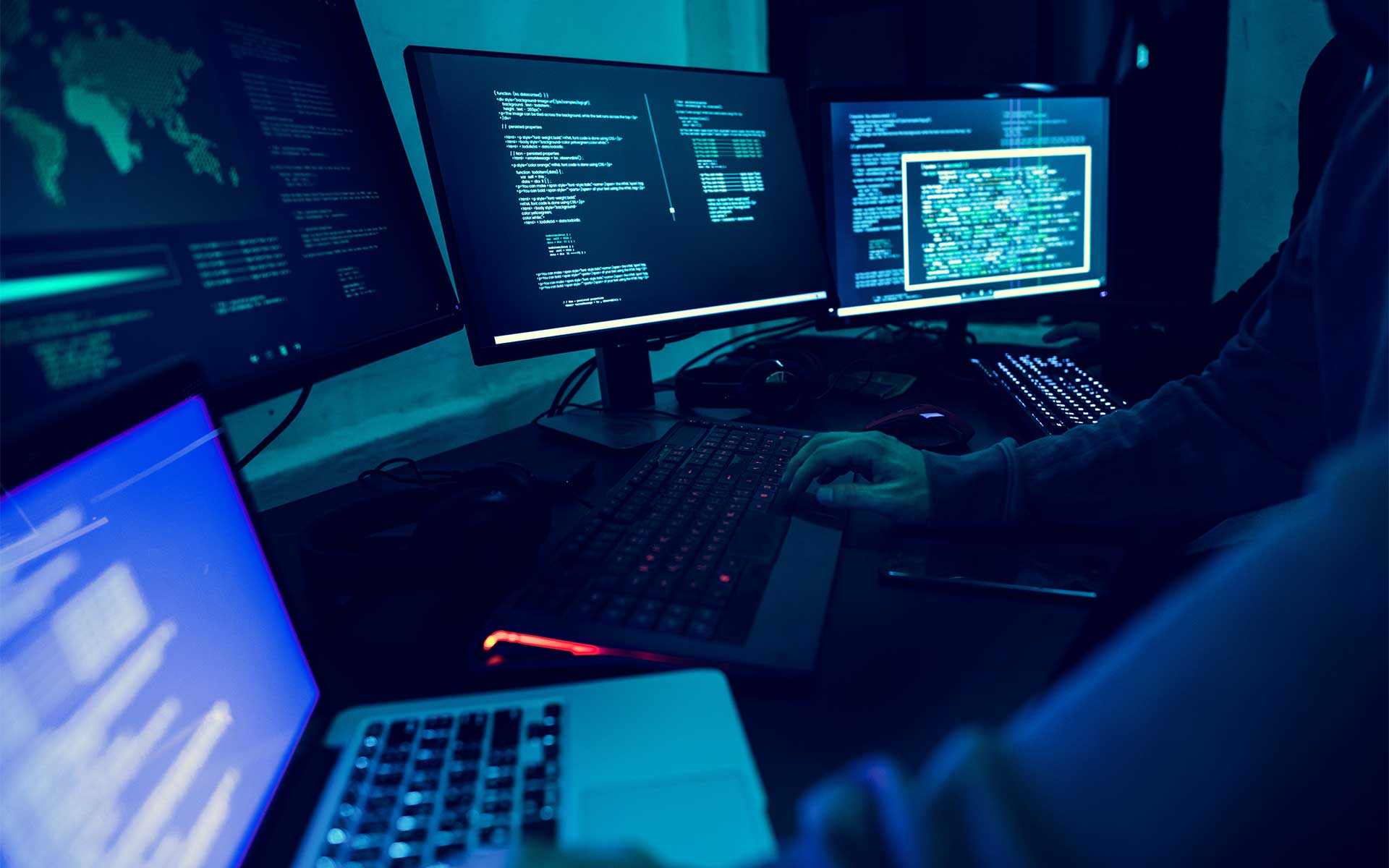
With around 60% of Americans reporting having their online security compromised, it is safe to say that cybercrime and data breaches are on the rise.
In this blog post, we clarify the specificities of cybercrime law by describing a cybercrime definition and different types of cybercrime. We also detail penalties for each type of cybercrime as well as available legal defense options when facing cybercrime charges.
Definition of Cybercrime
Cybercrime is a legal offense of another person’s, company’s, institution’s, or state’s information and communication technologies (ICT), meaning that it refers to a violation related to the use of computers, smart technologies, and computer networks. Cybercriminals use these technologies to access and violate the other party’s security, data, or finances.
While cybercriminals are often portrayed in popular culture as lone hackers operating from their bedrooms, perpetrators can often be governments and non-governmental actors conducting espionage and other types of cybercrime.
Different Types of Cybercrimes
Hacking

Hacking is a type of cybercrime that involves unauthorized accessing of a targeted person’s computer and sensitive information. While some organizations and other entities engage in ethical hacking in order to ensure their own security levels, malicious hacking is often conducted without the victim’s knowledge and aims at remotely accessing their personal digital device. Texas Penal Code defines hacking as a felony.
Data Theft
Data theft, commonly known as piracy, refers to the illegal downloading or obtaining of copyrighted content such as software, documents, films, or music. Unlike hacking, this type of cybercrime does not require highly technical skill sets by the perpetrator, since it’s facilitated by widely available user-friendly software and peer-to-peer sharing websites.
Identity Theft
The rise of the digitization of healthcare, online shopping and banking, and other similar services resulted in immense online databases of the personal information of billions of people. As we leave our digital fingerprints, we are increasingly vulnerable to identity theft. This type of cybercrime refers to a situation in which a perpetrator obtains access to another person’s sensitive information such as social security numbers, credit cards, and bank accounts, with the intent to abuse them, often for personal gain.
Account Hijacking
Account hijacking is a specific type of identity theft. It happens when a cybercriminal gains access and control over their target’s usernames, passwords, and generally entire online accounts. Account hijacking includes the seizure of a person’s emails, social media accounts, bank accounts, and similar.
Cyberterrorism
Cyberterrorism is a type of prearranged cybercrime that is often politically motivated. It aims at gaining access to and control of sensitive data, software, and other information systems belonging to an organization, government, state, or private individuals. As a result, critical infrastructure and sensitive data are disrupted or abused.
Cyberstalking
Cyberstalking includes different types of online harassment. This kind of cybercrime happens when a perpetrator, who in most cases knows the victim from off-line life, targets them with emails, online messages, unsolicited photographs, and similar types of intrusive and repetitive behavior. It is not uncommon that cyberstalking is accompanied by offline, physical stalking, especially if the perpetrator sees that cyberstalking is unsuccessful.
Suspicious Network Traffic
Suspicious network traffic is a type of cybercrime in which a perpetrator uses an unsecured connection or suspicious file or link in order to gain access to accounts and data of unsuspecting individuals. Various cases of spam mail and phishing are just some of the examples of this.
Social Networking/Email Account Intrusions
Our online accounts are generally secure, but not 100% secure. Sometimes, a person can mistakenly stay logged in on another person’s or organization’s device, making it vulnerable to abuse by cybercriminals. Cybercriminals can also intentionally obtain a person’s login details and intrude on their online accounts. For this reason, it is important to keep usernames and passwords secure and to update passwords from time to time.
Malicious Software
Cybercriminals use malicious software in order to gain access to a specific network or system and damage it or obtain sensitive information.
Child Abuse
Cybercriminals sometimes use social media and various chatrooms to misrepresent themselves as someone else, usually a child’s peer. This is often done with an aim of obtaining or producing child pornography or abusing a targeted child. Online child abuse is extremely tricky to defend in a court of law and is subject to severe penalties.
Cybercrime Penalties

Fourth-Degree is a Class A misdemeanor and is the most benign of all cybercriminal offenses and happens when an unauthorized perpetrator gains access to a digital device or network and destroys their target’s data.
Third-degree cybercrime involves digital infringement of the fourth degree accompanied by a proven intent to commit a felony. A person can also be charged with third-degree cybercrime in case they have previously been charged with cybercrime.
Second-degree cybercrime is a Class D felony and refers to a situation where a person has, in addition to being charged with the fourth-degree cybercrime, also intentionally modified or deleted another person’s or organization’s data.
First-degree cybercrime is a Class C felony and happens when a perpetrator commits a fourth-degree cybercrime and additionally modifies or destroys digital data exceeding $50,000 and up to 15 years in prison.
Legal Defense for Cybercrime Charges
There are several potential legal options for defending a cybercrime. An attorney can argue that there are reasonable grounds to assume that the accused was authorized to use the digital device or network in question, that they were authorized to edit or destroy the data, or that they were authorized to reproduce copyrighted software or data.
A criminal defense attorney who is experienced in cyber criminal can decide which of these lanes it is best to take in order to achieve a favorable outcome for the defendant. If you are facing cybersecurity charges, contact GHC Law Firm for legal consultations at (512) 614-4412.


